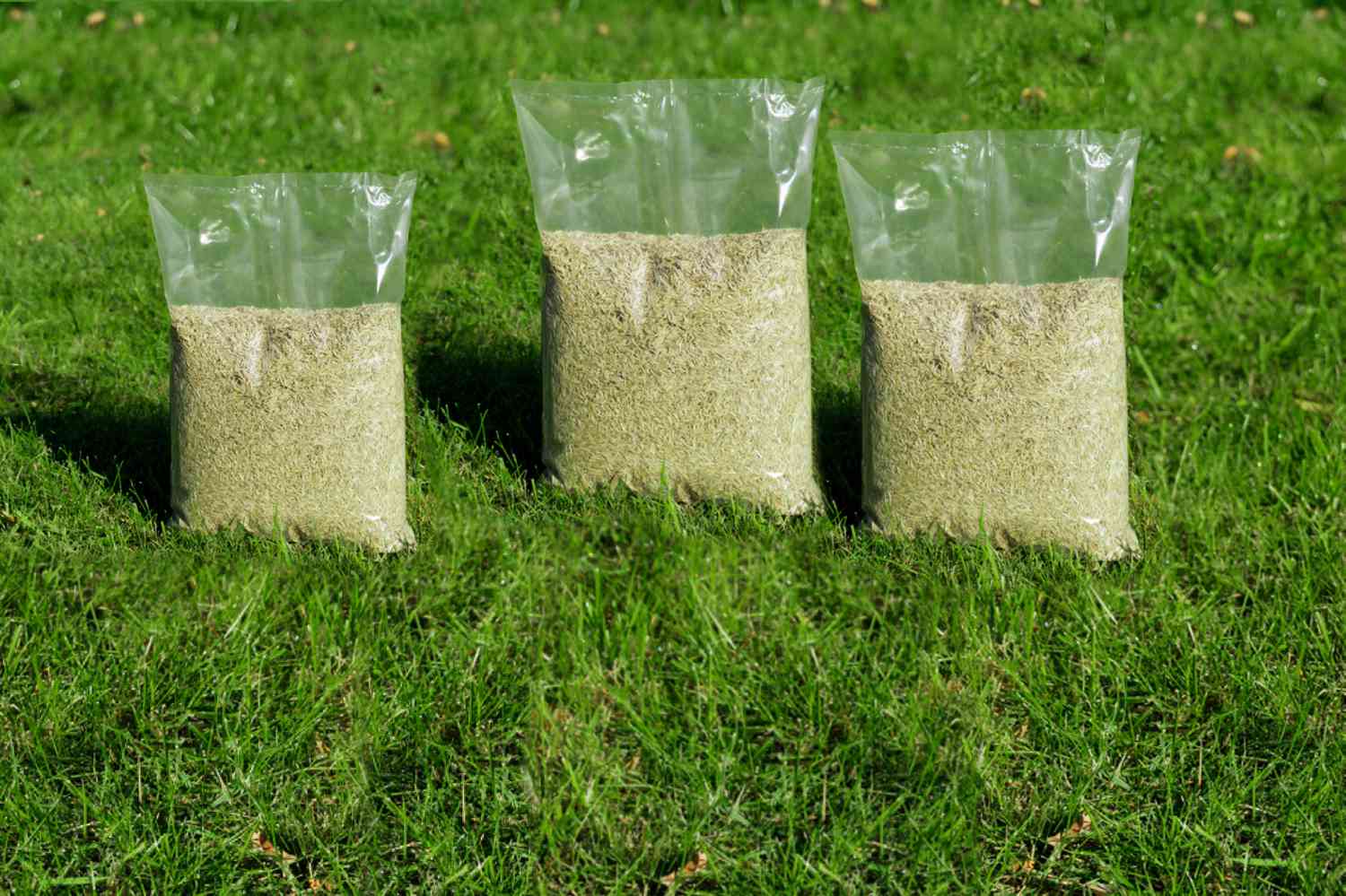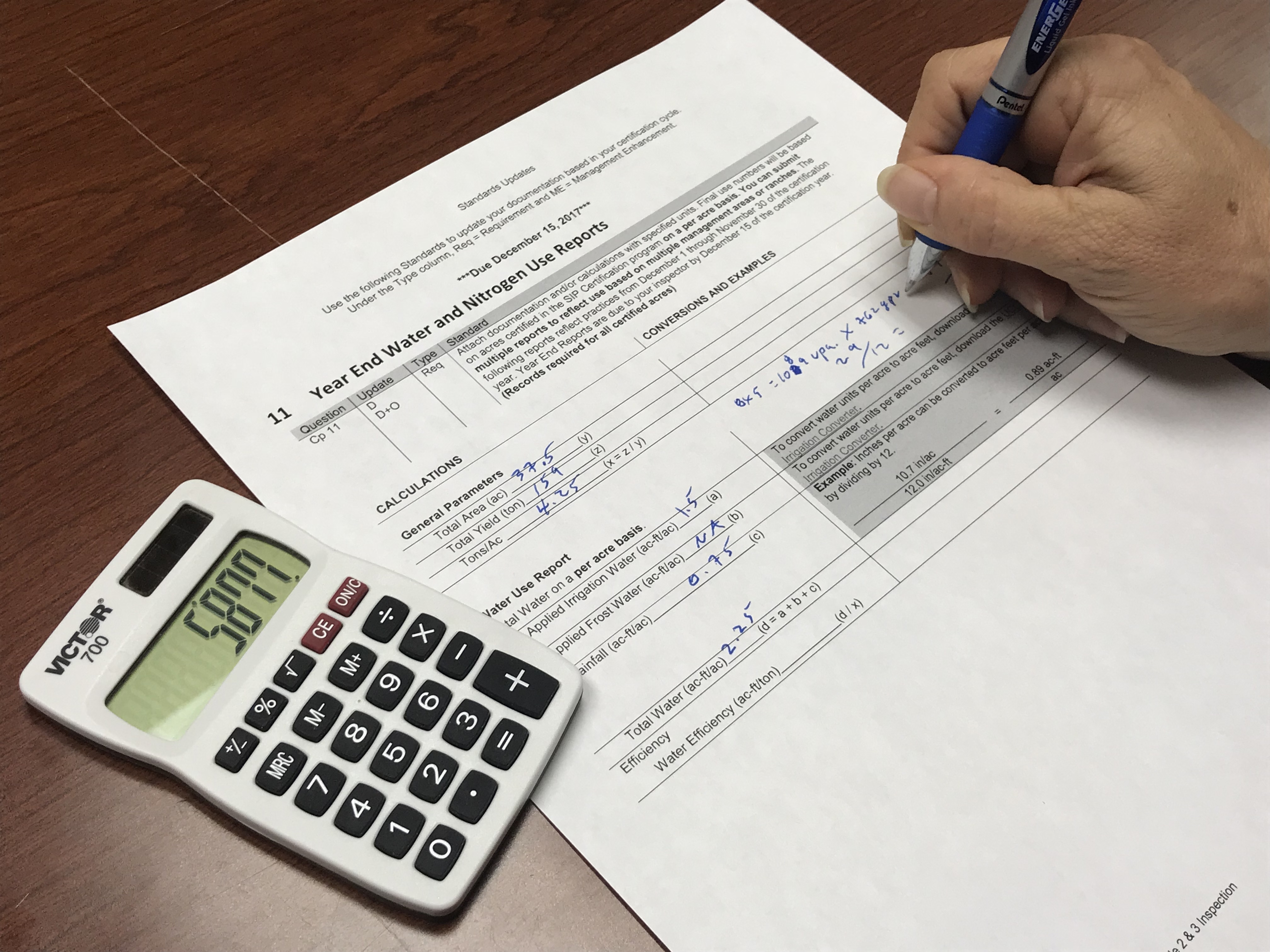

Articles
How Much 19-19-19 Fertilizer Per Acre
Modified: October 28, 2024
Learn how to calculate the perfect amount of 19-19-19 fertilizer per acre with our informative articles. Optimize your crop yield with expert advice.
(Many of the links in this article redirect to a specific reviewed product. Your purchase of these products through affiliate links helps to generate commission for Storables.com, at no extra cost. Learn more)
Introduction
Welcome to our comprehensive guide on understanding and utilizing 19-19-19 fertilizer for optimal results. As an essential component of modern agriculture, fertilizers play a crucial role in ensuring healthy plant growth, improved yields, and overall crop health. Among the various types of fertilizers available, 19-19-19 fertilizer is a popular choice due to its balanced nutrient composition.
In this article, we will explore what 19-19-19 fertilizer is, the significance of the nutrient ratio, and how to determine the appropriate amount of fertilizer to apply per acre for maximum effectiveness.
Whether you are an experienced farmer, a gardening enthusiast, or simply someone seeking to enhance their understanding of fertilizers, this guide will provide you with valuable insights and practical tips to optimize your fertilizer application and achieve outstanding results.
So let’s dive in and explore the world of 19-19-19 fertilizer!
Key Takeaways:
- 19-19-19 fertilizer provides balanced nutrients for plant growth, but its effective application requires consideration of soil and crop needs, desired yield, and environmental factors. Accurate calculations and proper application methods are crucial for success.
- Effective 19-19-19 fertilizer application involves timing, uniform distribution, and environmental mindfulness. By following best practices and considering safety precautions, growers can optimize nutrient utilization and minimize negative impacts on the environment.
Read more: How Much Fertilizer Per Acre Of Corn
What is 19-19-19 Fertilizer?
19-19-19 fertilizer, also known as NPK fertilizer, is a premium-grade granular fertilizer that contains a balanced combination of essential nutrients required for plant growth. The numbers 19-19-19 represent the percentage by weight of the primary nutrients present in the fertilizer: nitrogen (N), phosphorus (P), and potassium (K).
Nitrogen is vital for strong vegetative growth and overall plant development. It plays a crucial role in promoting lush green foliage, stimulating the production of proteins and enzymes, and enhancing the overall metabolism of plants. Phosphorus is essential for root development, flowering, and fruiting. It aids in energy transfer and supports strong root systems, ensuring efficient nutrient absorption. Potassium is responsible for overall plant health and vigor. It contributes to disease resistance, water regulation, and improves the synthesis of carbohydrates and proteins.
The 19-19-19 ratio means that each of these three nutrients is present in equal concentrations of 19%. This equal balance is particularly beneficial for crops that require uniform nutrient uptake throughout their growth cycle.
One of the key advantages of 19-19-19 fertilizer is its versatility. It can be used on a wide range of crops, including field crops, vegetables, fruits, ornamentals, and turf. The balanced nutrient composition ensures that plants receive the necessary nutrients for optimal growth and yield.
Additionally, 19-19-19 fertilizer is available in both slow-release and fast-release forms. Slow-release fertilizers gradually release nutrients over an extended period, providing a continuous and consistent supply to meet the plant’s needs. Fast-release fertilizers, on the other hand, release nutrients rapidly, delivering a quick boost to the plants.
Before using 19-19-19 fertilizer, it is crucial to consider factors such as soil conditions, plant nutrient requirements, and the specific growth stage of the crop. This knowledge will help determine the appropriate application rate and timing, ensuring optimal utilization of the fertilizer and preventing any potential nutrient imbalances.
Now that we understand the basics of 19-19-19 fertilizer, let’s delve deeper into the significance of the nutrient ratio and how it impacts plant growth and development.
Understanding the Nutrient Ratio
The nutrient ratio of a fertilizer, such as 19-19-19, is an important factor to consider when determining its effectiveness and appropriate application rate. This ratio represents the proportion of nitrogen (N), phosphorus (P), and potassium (K) in the fertilizer.
Each nutrient in the 19-19-19 fertilizer has specific functions and impacts on plant growth:
- Nitrogen (N): Nitrogen is essential for promoting leafy green growth and overall plant vigor. It aids in the synthesis of proteins, enzymes, and chlorophyll, which are vital for photosynthesis and energy production. Nitrogen deficiency can result in stunted growth, yellowing leaves, and reduced yields.
- Phosphorus (P): Phosphorus is crucial for root development, early plant growth, and the production of flowers and fruits. It is involved in energy transfer, DNA synthesis, and overall plant metabolism. Insufficient phosphorus can lead to weak roots, poor flowering, and reduced fruit set.
- Potassium (K): Potassium plays a vital role in improving plant resilience to stress, disease resistance, and overall plant health. It regulates water movement within the plant and aids in nutrient transport. Potassium deficiency can result in reduced cell division, weaker stems, and increased susceptibility to diseases and pests.
The balanced nutrient ratio of 19-19-19 fertilizer ensures that all three essential nutrients are provided in equal proportions. This balance is particularly beneficial for crops that require uniform nutrient uptake throughout their growth cycle. However, it is important to note that different crops have varying nutrient requirements, and soil conditions should also be taken into account.
When applying 19-19-19 fertilizer, it is crucial to consider the specific needs of the plants. Young seedlings and actively growing plants may require higher nitrogen levels to support their rapid growth. On the other hand, blooming plants and those nearing maturity may benefit from increased phosphorus and potassium levels to enhance flower and fruit production.
Soil testing is an invaluable tool for determining the nutrient levels in the soil and can help guide fertilizer application decisions. Understanding the nutrient needs of the plants, the nutrient levels in the soil, and the growth stage of the crop will allow for targeted and effective fertilization.
Now that we have a solid understanding of the nutrient ratio, let’s move on to exploring the factors that can influence the fertilizer application rate.
Factors Affecting Fertilizer Application Rate
When determining the appropriate fertilizer application rate for 19-19-19 fertilizer per acre, several factors need to be taken into consideration. These factors can vary depending on the specific crop, soil conditions, and environmental factors. Let’s explore some of the key considerations:
- Soil Nutrient Levels: Soil testing plays a crucial role in determining the nutrient levels present in the soil. By analyzing the soil, you can identify any deficiencies or excesses of specific nutrients. This information allows you to adjust the fertilizer application rate and target the specific nutrient requirements of the crop.
- Crop Nutrient Requirements: Different crops have varying nutrient requirements at different growth stages. Understanding the nutrient needs of the specific crop and its growth stage is essential for determining the appropriate fertilizer application rate. Refer to crop-specific guidelines or consult agricultural experts for accurate information.
- Desired Yield: The desired yield of the crop also influences the fertilizer application rate. Higher yields often require increased nutrient inputs. It is important to strike a balance between providing adequate nutrients for optimal growth and avoiding excessive nutrient application, which can lead to environmental contamination and crop damage.
- Environmental Factors: Environmental conditions such as temperature, rainfall, and humidity can impact nutrient availability and plant nutrient uptake. In regions with high rainfall, nutrients may leach more quickly from the soil, necessitating more frequent or higher fertilizer applications. Conversely, in arid regions, irrigation practices may affect nutrient distribution and utilization.
- Soil Type and pH: Different soil types have varying nutrient-holding capacities and may require different application rates. Sandy soils, for example, tend to have lower nutrient retention, requiring more frequent applications at reduced rates. Additionally, the pH level of the soil can affect nutrient availability to plants. Adjusting soil pH, if necessary, can facilitate better nutrient uptake.
- Fertilizer Type and Release Rate: The type of fertilizer, whether slow-release or fast-release, can impact the application rate. Slow-release fertilizers release nutrients gradually over an extended period, reducing the frequency of application. Fast-release fertilizers, on the other hand, provide an immediate nutrient supply and may require more frequent applications.
Considering these factors will help determine the appropriate fertilizer application rate for 19-19-19 fertilizer per acre. Remember, it is essential to strike a balance between meeting the nutrient requirements of the crop and minimizing potential environmental impacts.
Now that we have explored the factors influencing fertilizer application, let’s move on to understanding how to calculate the fertilizer requirement per acre in a step-by-step manner.
Apply 19-19-19 fertilizer at a rate of 200-300 pounds per acre for most crops. Adjust based on soil test results and specific crop needs.
Calculating Fertilizer Requirement per Acre
Calculating the fertilizer requirement per acre is a crucial step in ensuring proper nutrient supply to your crops. By accurately determining the amount of 19-19-19 fertilizer needed, you can optimize plant growth and minimize the risk of nutrient deficiencies or excesses. Follow these steps to calculate the fertilizer requirement per acre:
- Obtain a soil test: Before calculating the fertilizer requirement, it is important to conduct a soil test to determine the nutrient levels in your soil. This will provide valuable information about any deficiencies or excesses of specific nutrients.
- Determine the crop nutrient requirements: Refer to reliable sources such as agricultural extension services or crop nutrient guidelines to determine the specific nutrient requirements of your crop at different growth stages.
- Consider the desired yield: Determine the target yield you want to achieve for your crop. Higher yields generally require more nutrient inputs.
- Calculate the nutrient application rate: Based on the soil test results, crop nutrient requirements, and desired yield, you can calculate the nutrient application rate. Multiply the recommended nutrient amount per acre by the percentage of each nutrient in the 19-19-19 fertilizer (0.19 for each nutrient). For example, if the recommended nitrogen application rate is 80 pounds per acre, you would need to apply 421 pounds of 19-19-19 fertilizer (80 / 0.19).
- Adjust for nutrient availability and fertilizer efficiency: Take into account the nutrient availability in your soil and the efficiency of the fertilizer you are using. If your soil has higher nutrient availability or if you are using a slow-release fertilizer, you may need to adjust the application rate accordingly.
It is important to note that these calculations provide a general guideline for determining the fertilizer requirement per acre. Variations may occur based on specific crop needs, environmental conditions, and soil characteristics. Regular soil testing and monitoring of crop performance can help fine-tune the fertilizer application rate over time.
Now that you have calculated the fertilizer requirement per acre, let’s move on to a step-by-step guide on how to determine the right amount of 19-19-19 fertilizer to apply.
Read more: How Much Clover Seed Per Acre
Step-by-Step Guide to Determine Fertilizer Amount
Determining the correct amount of 19-19-19 fertilizer to apply can greatly impact the effectiveness of your fertilization efforts. Follow this step-by-step guide to ensure precise and accurate fertilizer application:
- Calculate the area: Measure or determine the size of the area you will be fertilizing. This could be the entire acre or a specific portion of your field or garden.
- Obtain the recommended application rate: Consult reliable sources such as agricultural extension services or crop-specific guidelines to determine the recommended application rate for 19-19-19 fertilizer per acre or per specific crop.
- Convert the recommended rate to the area being fertilized: Multiply the recommended application rate by the area you calculated in step 1. This will give you the total amount of fertilizer needed for that area.
- Adjust for fertilizer nutrient content: Take into account the nutrient content of the 19-19-19 fertilizer. Since the ratio is 19-19-19, it means that each nutrient is present in 19% concentration. Divide the total amount of fertilizer you calculated in step 3 by 0.19 to determine the final amount of 19-19-19 fertilizer needed.
- Consider fertilizer type and release rate: If you are using slow-release fertilizer, adjust the amount accordingly. Slow-release fertilizers often require smaller quantities but more frequent applications compared to fast-release fertilizers. Follow the manufacturer’s recommendations for application rates.
- Apply the fertilizer: Use appropriate equipment, such as a spreader or sprayer, to evenly distribute the calculated amount of 19-19-19 fertilizer across the designated area. Follow safety guidelines and best practices for fertilizer application to minimize any potential risks.
- Monitor plant growth and adjust as needed: Keep a close eye on the response of your plants to the fertilizer application. Monitor their growth, health, and nutrient uptake. If necessary, make adjustments to the application rates or timing based on plant performance and nutrient requirements.
Following this step-by-step guide will help ensure accurate fertilizer application and provide your plants with the necessary nutrients for optimal growth and productivity.
Next, let’s explore some considerations for effective fertilizer application to further enhance the benefits of using 19-19-19 fertilizer.
Considerations for Effective Fertilizer Application
Proper and effective fertilizer application is essential to maximize the benefits of using 19-19-19 fertilizer. Consider the following factors to ensure the optimal utilization of nutrients and promote healthy plant growth:
- Timing: Apply the fertilizer at the appropriate time to meet the specific nutrient requirements of your crops. Consider the growth stage of the plants and the availability of nutrients in the soil. It is generally recommended to apply fertilizers before planting or during periods of active growth.
- Application method: Choose the appropriate method for applying the 19-19-19 fertilizer based on the crop type, soil conditions, and equipment availability. Common application methods include broadcasting, banding, or side-dressing. Consult agricultural experts or refer to crop-specific guidelines for the most suitable application method.
- Uniform distribution: Ensure the 19-19-19 fertilizer is evenly distributed across the target area. Uneven distribution can lead to nutrient deficiencies or excesses in certain areas, resulting in inconsistent plant growth. Use calibrated spreaders or sprayers to ensure uniform coverage.
- Avoid overdosing: Applying excessive amounts of fertilizer can lead to nutrient imbalances, plant stress, and environmental pollution. Follow the recommended application rates and avoid the temptation to over-fertilize for quicker results. Regular soil testing can help monitor nutrient levels and adjust fertilizer application accordingly.
- Consider environmental factors: Be mindful of environmental factors such as rainfall, wind, and temperature when applying 19-19-19 fertilizer. Heavy rainfall can wash away nutrients, requiring additional applications or adjustments. Windy conditions may result in the fertilizer drifting away from the target area. Apply fertilizer during calm weather to minimize these risks.
- Recordkeeping: Maintain accurate records of fertilizer applications, including the amount, timing, and location. These records will help track the effectiveness of the fertilizer program, make informed adjustments in subsequent seasons, and ensure compliance with regulatory requirements.
- Safety precautions: Handle fertilizers with care and wear appropriate protective gear when applying them. Follow all safety guidelines provided by the manufacturer. Keep children, pets, and livestock away from the fertilized area until it is safe.
By considering these factors and implementing best practices for fertilizer application, you can optimize the effectiveness of 19-19-19 fertilizer and promote healthy plant growth while minimizing potential negative impacts on the environment.
Now that we have explored the considerations for effective fertilizer application, let’s summarize the key points of this guide.
Conclusion
In conclusion, 19-19-19 fertilizer is a balanced granular fertilizer that provides essential nutrients for optimal plant growth and development. Understanding its composition and nutrient ratio is vital for effective fertilizer application.
We explored what 19-19-19 fertilizer is, its equal proportion of nitrogen (N), phosphorus (P), and potassium (K), and its versatility in meeting the nutrient requirements of various crops. The nutrient ratio of 19-19-19 ensures balanced nutrient uptake, promoting healthy foliage, root development, flowering, and fruiting.
To determine the fertilizer requirement per acre, it is important to consider factors such as soil nutrient levels, crop nutrient requirements, desired yield, environmental conditions, soil type and pH, and fertilizer type and release rate. Soil testing and accurate calculations help achieve precise nutrient application rates.
We provided a step-by-step guide to determine the fertilizer amount, emphasizing the importance of accurate measurements, recommended application rates, nutrient content adjustments, and proper application methods. Monitoring plant growth and making necessary adjustments based on performance and nutrient requirements are crucial for success.
We also discussed considerations for effective fertilizer application, including timing, application method, uniform distribution, avoiding overdosing, environmental factors, recordkeeping, and safety precautions. Attention to these factors ensures optimal nutrient utilization, improves crop productivity, and minimizes environmental impacts.
By following the guidelines and best practices outlined in this comprehensive guide, you can effectively utilize 19-19-19 fertilizer to promote healthy plant growth, maximize yields, and contribute to sustainable agricultural practices.
Remember, fertilizers are just one component of a comprehensive approach to plant nutrition. Proper irrigation, soil management, and integrated pest management are equally important for achieving long-term crop success.
We hope this guide has provided you with valuable insights and practical tips to optimize your fertilizer application using 19-19-19 fertilizer. Wishing you bountiful harvests and flourishing gardens!
Now that you've learned how much 19-19-19 fertilizer to use per acre, why not delve deeper into proper techniques for fertilizer application? Our next article offers a comprehensive guide on applying fertilizers effectively, ensuring plants receive the nutrients they need to thrive. Mastering these methods not only boosts plant health but also optimizes your garden's overall productivity.
Frequently Asked Questions about How Much 19-19-19 Fertilizer Per Acre
Was this page helpful?
At Storables.com, we guarantee accurate and reliable information. Our content, validated by Expert Board Contributors, is crafted following stringent Editorial Policies. We're committed to providing you with well-researched, expert-backed insights for all your informational needs.















0 thoughts on “How Much 19-19-19 Fertilizer Per Acre”